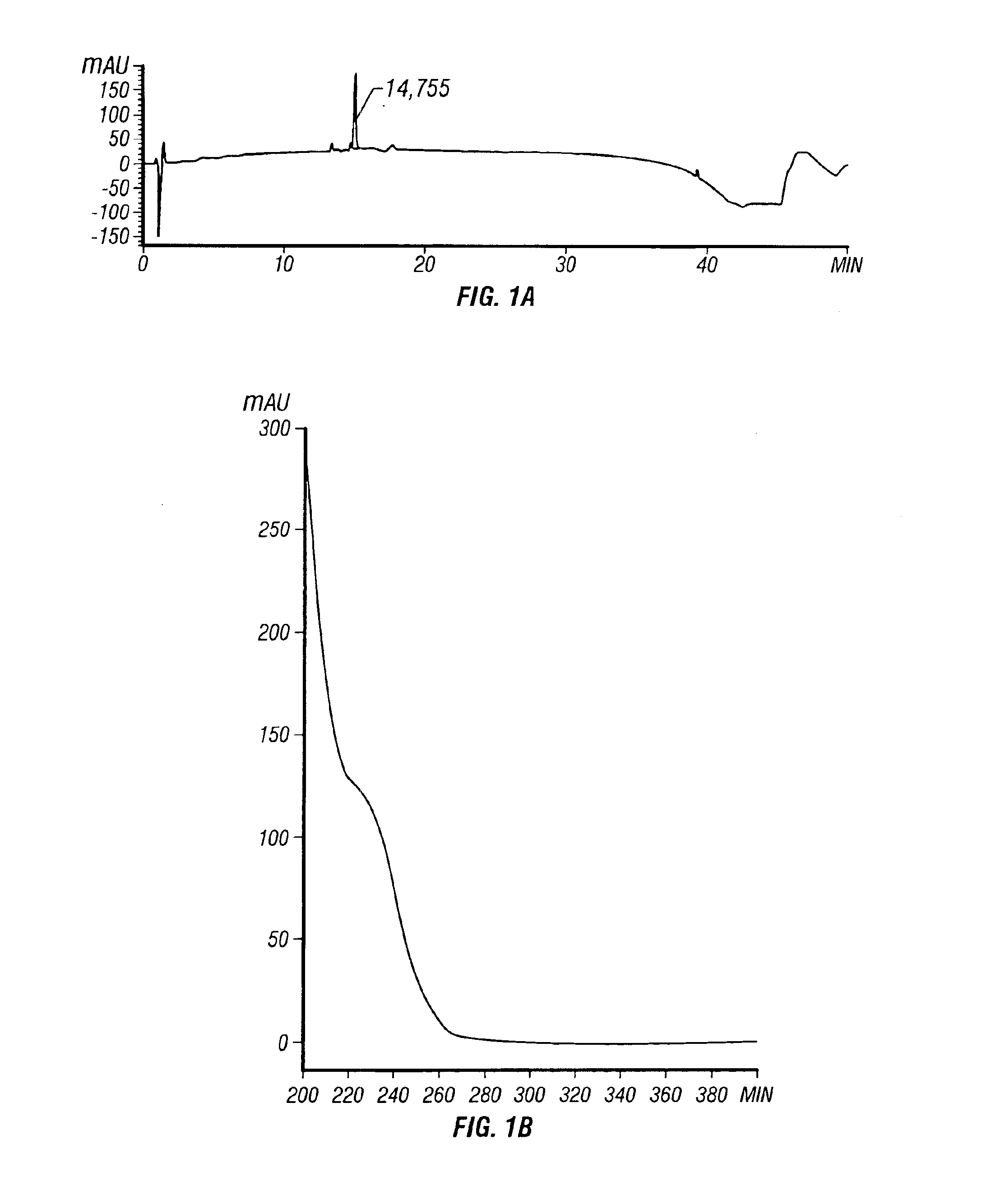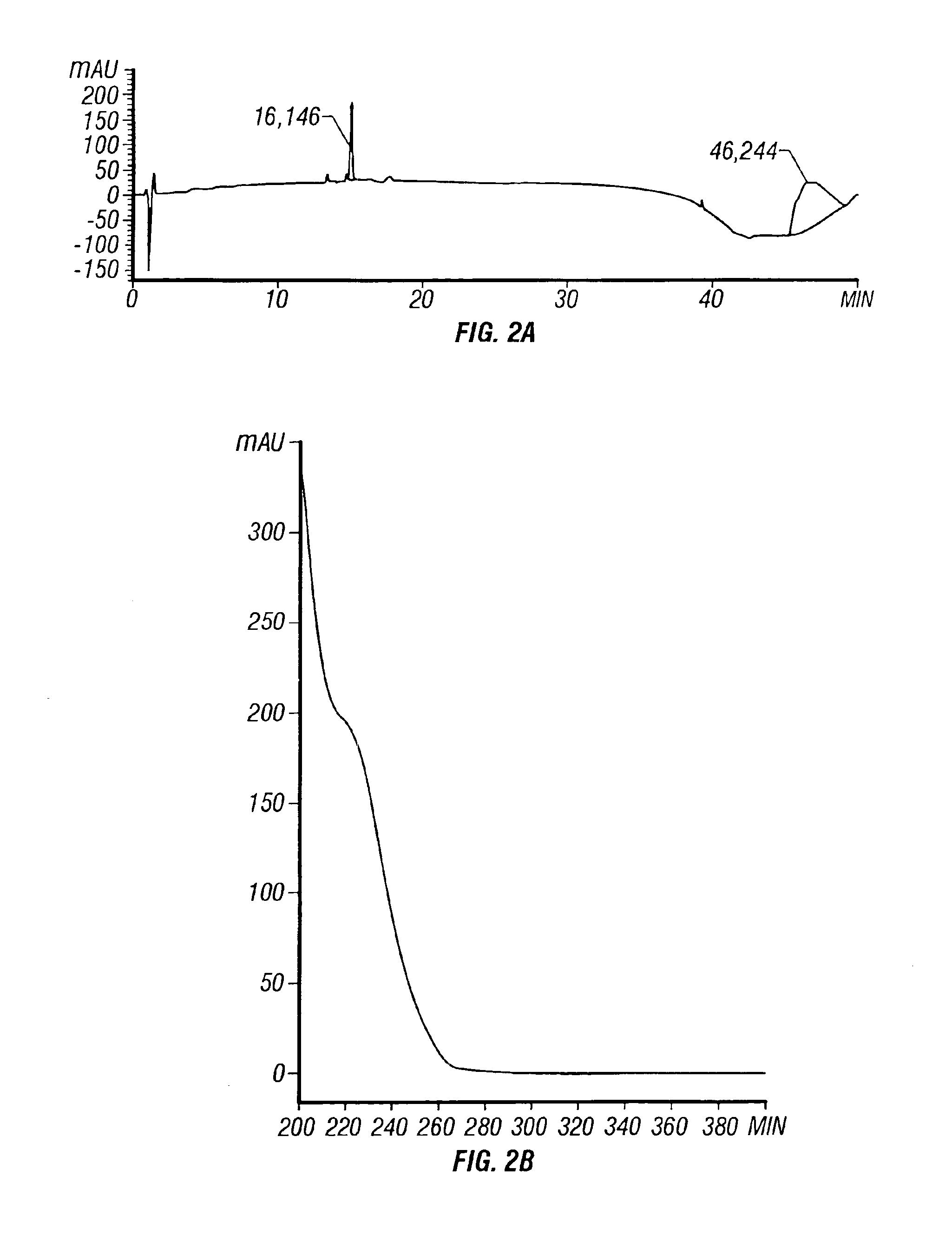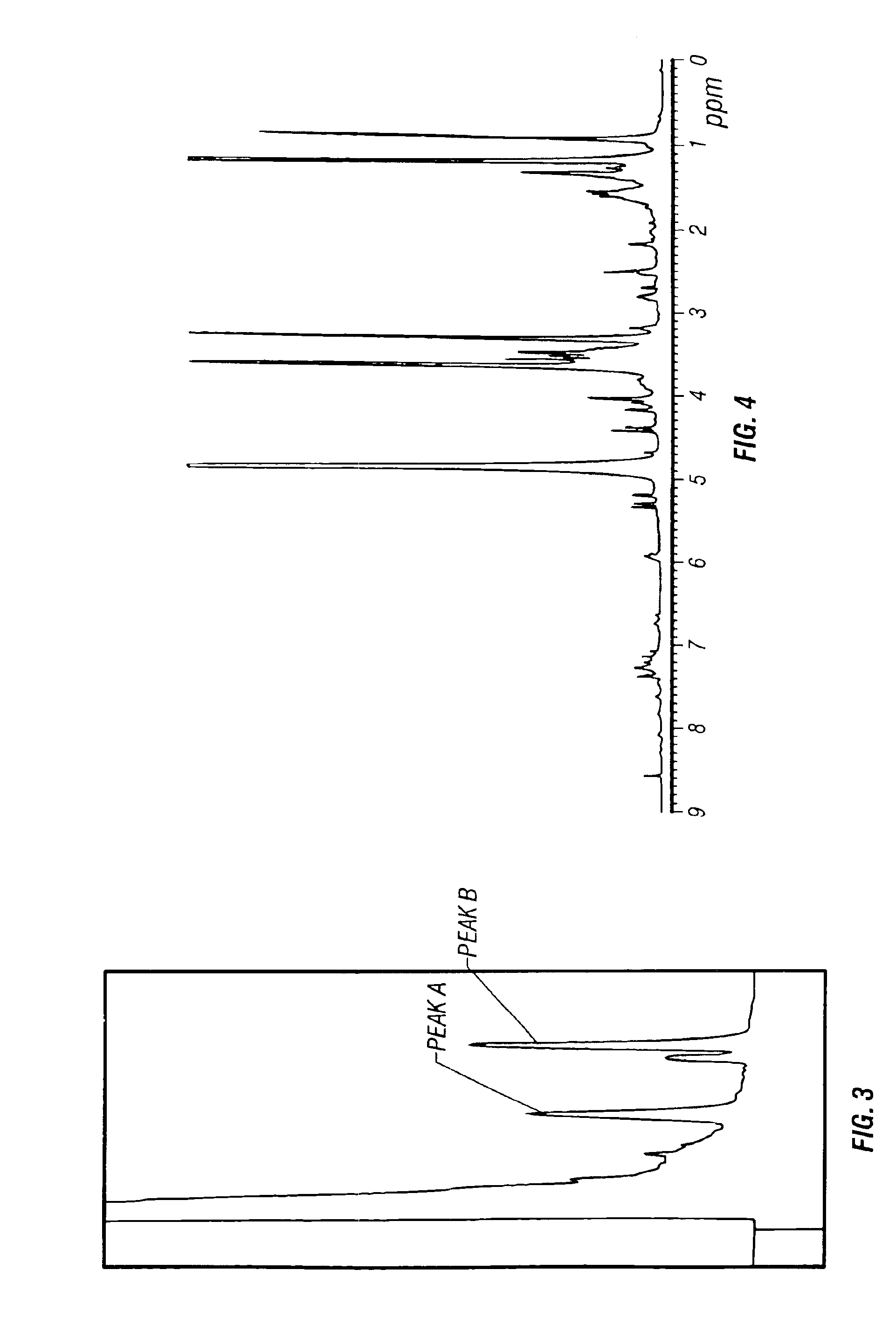Metabolite from streptomyces strain NRRL accession No. B-30145 and mutants thereof for controlling plant diseases
a technology of streptomyces strain and metabolite, applied in the field of biopesticides, can solve problems such as toxic to wildlife and other non-target species
- Summary
- Abstract
- Description
- Claims
- Application Information
AI Technical Summary
Benefits of technology
Problems solved by technology
Method used
Image
Examples
example 1
Characterization of Strain NRRL No. B-30145
NRRL No. B-30145 was identified based on 16S rRNA sequencing. The protocol used to generate the 16S rRNA gene data sequence (Acculab Customer Handbook v. 1.0) is described as follows.
The 16S rRNA gene is PCR amplified from genomic DNA isolated from bacterial colonies. Primers used for the amplification correspond to E. coli positions 005 and 531. Amplification products are purified from excess primers and dNTPs using Microcon 100 (Amicon) molecular weight cut-off membranes and checked for quality and quantity by running a portion of the products on an agarose gel.
Cycle sequencing of the 16S rRNA amplification products is carried out using AmpliTaq FS DNA polymerase and dRhodamine dye terminators. Excess dye-labeled terminators were removed from the sequencing reactions using a Sephadex G-50 spin column. The products are collected by centrifugation, dried under vacuum and frozen at−20° C. until ready to load. Samples are re-suspended in a so...
example 2
Activity of NRRL No. B-30145 Against Plant Pathogens in In-Vitro Culture (Zone Assay).
NRRL No. B-30145 was tested against an array of different plant pathogens utilizing two different in-vitro assays. The agar diffusion (zone) assay consists of applying either plant pathogen spores over the surface of an agar medium to create an entire lawn of growth or utilizing a mycelial agar plug placed in the center of the petri dish that will grow and colonize the agar. Circular wells approximately 7.0 mm in diameter are removed from the agar using a pipette attached to a vacuum pump. Fermentation samples of NRRL No. B-30145 are added to each well along with known standards and water checks. Plates are incubated for three to four days under environmental conditions conducive for each pathogen. Results consist of a zone of no pathogen growth around the well or a greatly reduced amount of pathogen growth around the well or no affect. The size and type of zone is recorded for each sample. Results...
example 3
Activity of NRRL Against Plant Pathogens in Plant Bioassay Tests.
Activity of NRRL No. B-30145 was tested against tomato late blight (Phytophthora infestans), tomato early blight (Alternaria solani), gray mold (Botrytis cinerea), turf brown patch (Rhizoctonia sp.), and peanut southern blight (Sclerotinia minor). All tests were conducted under controlled environment in the laboratory with plant material grown from seed under typical commercial greenhouse conditions.
Tomato Late Blight—Phytophthora infestans
The pathogen is grown on rye agar in standard petri dishes at 16° C. in the dark. Sporangia are collected by flooding the plate with water and scraping the mycelium to dislodge the sporangia. The sporangial suspension is passed through cheesecloth, quantified and adjusted to 1.0×104. Tomato seedlings at the 3rd to 5th leaf stage are sprayed to run-off with the fermentation sample of NRRL No. B-30145 using an artist airbrush at 40 psi. Treated seedlings are allowed to air dry at room...
PUM
| Property | Measurement | Unit |
|---|---|---|
| molecular weight | aaaaa | aaaaa |
| molecular weight | aaaaa | aaaaa |
| molecular weight | aaaaa | aaaaa |
Abstract
Description
Claims
Application Information
 Login to View More
Login to View More - R&D
- Intellectual Property
- Life Sciences
- Materials
- Tech Scout
- Unparalleled Data Quality
- Higher Quality Content
- 60% Fewer Hallucinations
Browse by: Latest US Patents, China's latest patents, Technical Efficacy Thesaurus, Application Domain, Technology Topic, Popular Technical Reports.
© 2025 PatSnap. All rights reserved.Legal|Privacy policy|Modern Slavery Act Transparency Statement|Sitemap|About US| Contact US: help@patsnap.com



